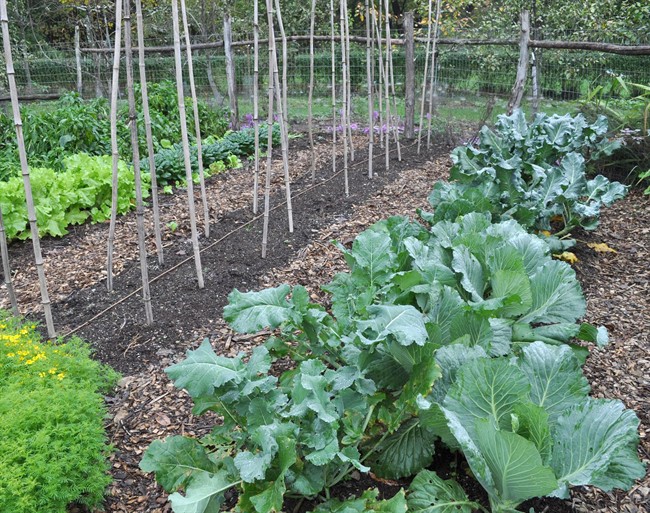In the heat of summer, it’s hard to imagine that the weather will ever be cool again. And with dry weather it’s hard to imagine it becoming rainy again.

But of course the weather does change, and you’ve got to plan what vegetables to grow for the cool and rainy days ahead that sap the vitality from tomatoes, cucumbers, peppers and other summer vegetables.
Growing fall vegetables is like having another whole growing season in the garden. Cool weather brings out the best flavour from vegetables such as kale, broccoli and carrots. And the harvest season is long; fall vegetables just sit pretty, awaiting harvest at your leisure. In spring and summer, cool-season vegetables like spinach, radishes and lettuce bolt, sending up a flower stalk and becoming poor for eating if not harvested quickly enough.
COMMIT YOURSELF
Before beginning to plan for fall vegetables, you need to make three commitments. The first is to maintain soil fertility. Remember, you are getting another growing season out of your garden, so apply fertilizer and liberal amounts of compost or other organic matter to the soil. Fall’s predominantly leafy vegetables are heavy feeders.
Second, don’t forget to water. Seedlings beginning life in summer often cannot get enough water for themselves. Natural rainfall and cooler temperatures eventually will lessen or eliminate watering chores as fall approaches.

Get daily National news
And third: Weed. Summer weeds compete with vegetable plants for water, space and nutrients.
TIMING IS IMPORTANT
To figure out when to sow any fall vegetable, look on the seed packet for the “days to maturity.” Cool weather and shorter days dramatically slow growth as fall approaches, so count on any vegetable being fully grown and ready for harvest around mid-September in northern gardens, and a few weeks or months later the further south you garden.
For vegetables that usually are transplanted, such as broccoli, cauliflower and cabbage, add three weeks, which is how long they need to grow to transplant size.
In northern climes, it’s too late to sow fall broccoli, endive, cabbage, carrots, beets and parsley, all of which need a relatively long season to mature. Mark your calendar for next year.
Enough time remains, though, even in northern regions, for a second wave of planting of such vegetables as lettuce, Chinese cabbage, kale and collards.
Check the days to maturity for Chinese cabbages; there are many varieties, and quicker maturing ones will bolt if sown too early. This sowing of lettuce should be the first of a few. Sow small amounts every couple of weeks and you will have a continuous supply of tender leaves for your salad bowl. Include some extra cold-hardy varieties, such as Winter Density, Rouge d’Hiver and Arctic King.
Vegetables in this second wave of planting for fall might follow your earlier plantings of bush beans or sweet corn, or you can sow in seed flats for transplanting three weeks later. The nice thing about using transplants is that there is no need to plant a whole row at once – you can tuck plants in here and there as space becomes available.
Later this month, when you have gathered up mature onions and perhaps dug up cucumber vines that finally succumbed to bacterial wilt, it’s time for yet a third wave of fall planting. Sow directly in the ground seeds of spinach, mustard, arugula and turnips. Also plant small radishes, the kind you normally sow in spring. And consider trying some offbeat fall greens, such as mache, miner’s lettuce and shungiku, an edible chrysanthemum.
A FINAL SOWING, FOR YOUR SOIL
The final crop for the fall vegetable garden – sown any time before the end of September – is not for you, but for the soil. This would be a so-called cover crop, usually rye grain or oats, sown to protect the soil from rain and wind, conserve nutrients and improve tilth.
Legumes, such as peas or alfalfa, add nitrogen to the soil via symbiotic bacteria in their roots and garner it from the atmosphere.
A cover crop also looks nice, a verdant blanket over the ground late into fall.
Local seed racks are often cleared out after midsummer. If this is the case, or if you seek varieties that are unavailable locally, you can order seeds by mail.
For more about cover crops or timing of plantings for your region, see my book, Weedless Gardening (Workman Publishing, 2001).






Comments